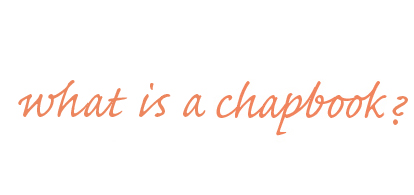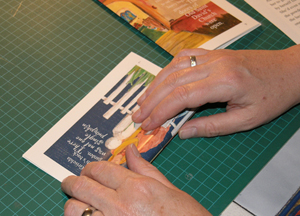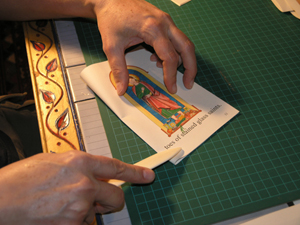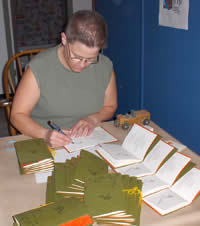Traditionally, chapbooks were small books, usally 5 1/2 by 4 1/4 inches (14 x 11 cm) in size. They were sold by peddlers, or chapmen, as they made their rounds from town to town through England and later America. Illustrations were made using wood cuts. The books were common from the 15th century to the late 19th century.
Chapbooks today are used for low cost copy production of small book runs, particularly poetry, also experimental and handmade books.
The books from Happy Leopard are handmade. The happy construction team for Book of Days: Nora, Audrey, Kim & her two friends, Tammy & husband, Pat, Henry, Amanda, Kate, Beth, Murray (the Beautiful Man). There was much folding, stamping, stabbing, sewing. We took a supper break and enjoyed cheese and buns, cut veggies and for dessert, rice krispie cake and Florentine.
Fold, and fold, and fold....
|
and fold, and fold, and fold.... |
 A three hole stitch was used for Pie. We put three holes in the spine, using implements we call in our hightly technical way "poky things". The local university book store sells them to biology students by the hundreds and we don't ask what they use them for. A three hole stitch was used for Pie. We put three holes in the spine, using implements we call in our hightly technical way "poky things". The local university book store sells them to biology students by the hundreds and we don't ask what they use them for. |
We remove one poky thing at a time and, starting from the back centre hole, put the needle through, go to the upper hole and out to the back again. Then down to the bottom hole, back to the inside. And finally to the centre hole again coming out at the back. Tie a knot. |
 |
|







 The author signs
The author signs